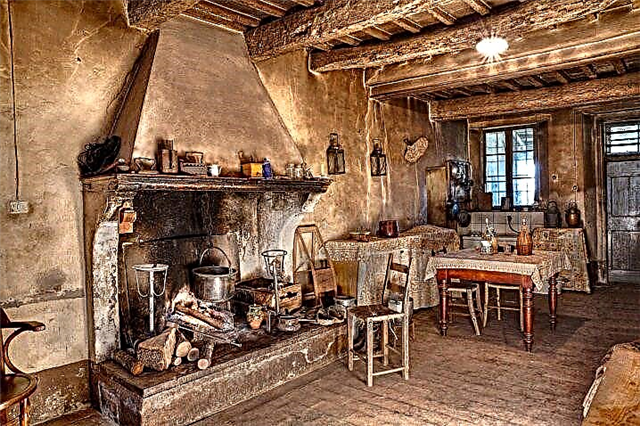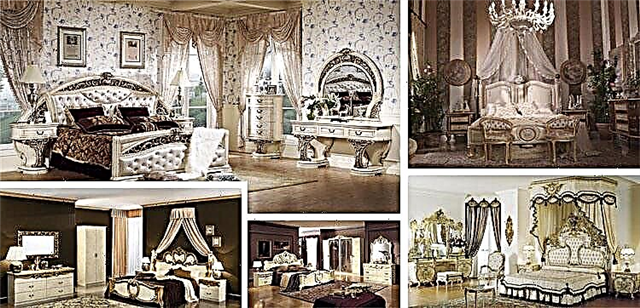Understanding why epoxy floors are so popular is easy. It is enough to get acquainted with their main advantages.
- epoxy floors are easy to clean and wash - removing dirt from them is much easier than from laminate or parquet,
- the material does not respond to temperature fluctuations - its quality and operational properties are not lost, which allows the coating to be used in saunas, unheated rooms,
- when installing the bulk floor, joints and gaps do not appear, which means that dirt does not accumulate, pathogens do not settle,
- complete absence of seams - no need to use sills,
- high strength characteristics and wear resistance - epoxy floors serve for decades without loss of external decorative characteristics,
- chemicals are not afraid of the material - the epoxy floor is not afraid of either acids or alkalis,
- epoxy floors do not smell, except for the drying time after application,
- excellent waterproofing performance is also an advantage of using such a coating. The material can be laid without waterproofing.
- the high cost of materials and tools required for installation of the coating,
- damage to the floor can occur due to the fall of a heavy object. Chips and scratches must be repaired immediately, as they are very striking,
- if necessary, dismantling the coating will be very difficult.
Preparing the base for a 3D floor
The main requirements for the supporting surface on which the polymer floors are arranged is their strict horizontalness and humidity level. Therefore, for a concrete floor, it is better to use a semi-dry screed, on top of which you need to make a leveling thickness of up to 5 mm. This will allow you to get a fairly flat horizontal surface. In the material of the leveling screed, you need to use fiber shavings as a reinforcing additive. The finished floor must be thoroughly dried. Further:
- the surface of the concrete screed must be cleaned of dust with an industrial vacuum cleaner,
- remove grease stains and dirt, using solvents if necessary,
- when working with an old concrete base, it is necessary to cut the cracks discovered and fill them with epoxy and only after that make a leveling screed,
- the porous surface must be treated with silling - this is a solution with strong penetrating properties.
It is traditionally believed that the surface of an old wooden floor is not suitable for polymer bulk floors. However, with some preparation, in a residential environment, this is quite possible. To do this, you need:
- open the floor, inspect the logs, if necessary - replace or repair unusable ones,
- close the floor, additionally strengthen the fastening of the boards,
- remove old paint
- repair cracks in the boards and the gaps between them with putty on wood, dry, sand the repair sites with an emery cloth,
- remove dust from the surface, arrange a leveling self-leveling screed.
Further actions are the same for both the concrete base and the wooden one.
The composition of the bulk floor - a reaction to the warm floor
Many builders do not recommend pouring the bulk floor on top of the Warm Floor system. Often, the authors of the council do without explanation, which gives rise to speculation. One of them says that when exposed to heat, the components of the bulk compounds begin to fill the air in the house.
Polymer and methyl methacrylate compositions not only expand very well, but also have a huge reserve of thresholds for minimum and maximum temperatures. For methyl methacrylate, this value ranges from -70 ° C to +150 ° C - values that are unlikely to occur in the conditions of your apartment or home. So the polymer compositions are suitable for bulk floors, except for epoxy.
Another drawback is the small range of colors. Although with the help of polymer films and dyes, skillful designers can correct the situation and make a huge variety. However, in the field of apartment renovation their services are still in little demand - people have enough of the solutions that are.
Trust a trusted manufacturer to buy the mix. Only a highly educated person in the field of chemical sciences will be able to really understand what a bulk floor consists of, while unknown names will appear to a layman as a set of letters. Manufacturers who wish to save on cheap components and fillers can take advantage of this.
Advantages and disadvantages - it is important to know!
The advantages of epoxy compositions for creating floor coverings are mostly related to bulk mixtures in general. However, the disadvantages that will be listed apply only to the epoxy bulk floor.
- Seamless coating technology - polymer epoxy self-leveling floor has a perfectly smooth and glossy surface. By the way, the degree of gloss can be reduced with the help of special additives. The absence of seams not only protects against moisture penetration, but also prevents the accumulation of dirt, the development of colonies of microorganisms and bacteria. That is why epoxy floors are so appreciated in medical facilities.
- High dirt-repellent properties - the epoxy floor is really easy to wash away from everyday dirt, and there will be no problems with complex dirt.
- Chemical resistance - alkalis and acids are not able to harm such a coating even at high concentrations. Industrial polymer epoxy bulk floors can often be found in pharmaceutical enterprises, warehouses for storing chemical reagents.
- Safety - when filling floors on the basis of epoxy resins, the degree of roughness can be adjusted, ensuring the absence of slipping even in the presence of oil stains. Epoxy does not support combustion.
- Long service life - epoxy floors have a service life of more than 20 years (by the way, this is not the limit for floor coverings, but also quite a lot), they are not at all threatened by ultraviolet radiation, they are resistant to abrasion.
- The optimal cost - for the family budget and inexpensive, but long-lasting repair, this option of flooring is perfect.
Of the disadvantages, it is important to mention the following:
- Fragility - Epoxy floors are very hard and very fragile. From impacts, the surface may become covered with cracks and chips.
- Loss of decorativeness - yet scratches will spoil the decorative glossy appearance of the floor over time. That is why it is more practical to make matt surfaces.
- Self-leveling floors are mostly difficult to remove from the surface - this rule also applies to epoxy. There can be no talk of repeated flooring; it can only be thrown into a landfill.
Possible floor decor
Polymer floors are characterized by a uniform structure.
In order to make the floor look more interesting, you can use these opportunities.
- In the process of filling the floor between the layers, you can place the paint, smearing it in unusual ways. Thanks to this, you can achieve an imitation of marble, decorate the surface.
- The use of glitters. These are volume sparkles that are made of polyester or aluminum foil. The shade of the sparkles can vary, they can be both monophonic and fluorescent. Often, designers combine several different types of glitter at once, forming unusual patterns.
- Placing drawings in between the layers. To perform this task, take volumetric pictures. Due to this, a realistic surface of almost any type is created. There are no restrictions regarding the complexity, since everything is connected precisely with the choice of the owner.
It is possible to decorate bulk polyurethane floors in different ways, using glitters, paint, placing various patterns between layers
What it is?
The polymer floor fundamentally differs from other types of flooring in its structure, since it does not fit, but is poured. The material is made on the basis of various polymers and sold as a liquid. To fill this type of floor, first make a full-fledged base of concrete screed or any other dense material, over which a liquid polymer is poured with a thin layer. That, hardening after a certain time, gives a perfectly smooth, and most importantly - a smooth (due to the ability of the liquid to form a uniform level) surface without the slightest joints.
Initially, this type of coverage was used in public institutions with a huge turnover of people - for example, in airport lounges
This application is due to the maximum ease of cleaning caused by the integrity of the coating without any seams and joints, as well as the high strength of the material, which makes it possible not to close the terminals and other rooms of special public importance for long-term repairs
However, private consumers quickly appreciated all the advantages of such a floor and became interested in the possibilities of pouring polymers in private homes, and manufacturers responded promptly to increasing demand and presented more affordable, but no less high-quality options for a house and apartment.
At the same time, the main consumers are still industrial enterprises and public institutions, however, for home use, such coverage may be appropriate. Polymer floors are available in two main varieties, but if you consider minor differences, you can count a huge number of different options, each of which has its own advantages and is optimally suited for rooms of one type or another.
Material Information
A liquid floor is a special mortar, which is made on the basis of polymeric materials and, until it hardens, has a very liquid consistency that allows it to literally be poured onto a rough foundation. It is from here that the name of this type of flooring went. It is quite simple to pour the liquid onto the draft floor, it will quickly and almost independently distribute evenly over it, hiding small blemishes.
Liquid floor - what is it?
In its texture and appearance, the frozen liquid floor is very similar to linoleum, but in terms of strength and reliability it is rather ceramic tile. The floor is very smooth, strong, it is not afraid of mechanical or chemical influences of various types. The coating reliably connects to the rough base, making it virtually impossible to tear off.
Flooring is very thin. Its maximum thickness usually does not exceed 6 mm. But this does not prevent the coating from being much stronger than other types of finishes. Such a foundation can withstand even a passing truck, not like walking people around the house.
Characteristics and recommendations on the use of various materials for leveling and organizing floor screed
Therefore, liquid floors are often poured precisely in workshops at the production site, in warehouses and other rooms where floors are experiencing significant stress. Such a floor can be poured in the gym, sometimes this type of coating is used even for the construction of cycle tracks. Often such a foundation is equipped in pharmaceutical and medical centers, culinary establishments. Some types of liquid floors withstand the effects of natural factors, and therefore can be arranged on street dance floors, near shopping centers, etc.
Bulk floor on the street
However, in residential areas, liquid floors have become frequent guests. They allow you to create an even and reliable foundation, not afraid of water, in any room of a house or apartment. Most often, this type of coating is arranged in the bathroom or the bathroom, in the kitchen - that is, where humidity indicators are high, constant changes in temperature, which is why other types of coatings (with the exception of ceramics) do not withstand and are destroyed for a long time.
3D bulk floors
The lifetime of a bulk liquid floor is decades. The warranty period claimed by the manufacturers is about 10 years, but in reality the floors last much longer.
Characteristic
The epoxy self-leveling floor has a slightly diffuse structure that can fill non-critical surface irregularities.
Depending on the specific operating conditions, epoxy floors can be classified by the thickness of the cladding, they are:
- Thin-layer, laid in 1 filling layer, the thickness of which is minimal and does not exceed 1 mm (usually from 0.5 mm), while the practical properties and attractiveness of the appearance of the material leave much to be desired (intended for pouring in rooms of an apartment with low traffic),
- Classic, made of several layers of filling, each of which is 1 mm, which significantly increases the resistance of the flooring to mechanical damage, abrasion, resistance to abrasive solutions (excellent flooring for an apartment and a country house).
In addition, epoxy bulk floors are divided into:
- Industrial varieties designed for industrial premises with high traffic and a maximum level of permissible load of a mechanical or chemical type, characterized by a variety of colors and textures,
- Quartz-filled fillings, reaching a thickness of up to 6 mm, characterized by the presence of quartz sand in the lower layer, which increases the adhesion of the material to the base, improves the resistance of the pouring to accidental mechanical damage, the effects of abrasive and chemical agents and temperature extremes,
- Transparent epoxy bulk floor, characterized by a layer thickness of 2-5 mm, depending on the type of planned surface, the distinguishing features of which are the minimum thickness of the optically transparent hardening film, light resistance, antistatic (excellent material for decorating the floor with photo printing and 3D-drawings).
Place of filling and level of loads
For residential premises and workshops for industrial purposes with relatively low load intensity, it is advisable to give preference to a thin layer composition.
For rooms with a high degree of load, you should choose a coating with a coating layer of at least 1 mm, or specialized industrial or quartz-filled compositions.
Room specifics
The indicator provides for the selection of the mixture in accordance with the presence of a certain type of load on the surface of the decorative coating.
If a lot of equipment is supposed to be powered by electricity, it is rational to opt for antistatic floors that can block static charges, minimizing the likelihood of accidents.
In addition, such a coating is very easy to care for, because it is also endowed with dedusting characteristics.
For rooms characterized by a periodic increase in humidity or accumulations of liquid on the floor, it is necessary to buy mixtures with anti-slip additives, which significantly increase comfort and safety of movement.
For laboratories with various chemicals, industrial, quartz-filled or conventional thick-layer formulations should be preferred.
Color properties of the floor and its appearance
For industrial and industrial buildings, the appearance of the floor does not always have a decisive role in the choice, but for residential premises and business centers whose owners care about the effectiveness of the coating, it is better to opt for finishes with decorative inclusions or pour luxurious and creative 3D bulk floors .
DIY flooring
Dressing the floor can be done in many ways. It is easiest to pour special “chips” onto the base layer until it completely hardens. Also, after curing, the base is painted with acrylics. It is hand painting that will become the most original and unusual version of the decoration of the fill. Another way to give the floor decorative properties is to order a banner, a sticker in a printing house, on which any images are applied. Typically, stickers are made of vinyl. Modern 3D printing looks especially beautiful.
There are certain requirements that a room must meet:
- temperature + 5 ... + 25 degrees (the same indicator should be at the base on which the compound will be poured),
- composition temperature + 15 ... + 25 degrees,
- air humidity not more than 80%,
- humidity of the base is less than 4% (for the Betolast mixture - up to 12%).
Surface preparation
The most reliable base for epoxy is the concrete floor. But, if necessary, you can pour the mass on other bases, even on tiles. Only with wooden bases can problems arise, because over time they become deformed.
It is important that the flooring is dry, even enough. Permissible deviation from the horizontal is not more than 2 mm for every 2 meters
Self-leveling mixtures can cover the floor and with serious deviations from this norm. The humidity of the floor is determined as follows: a film of polyethylene 1 * 1 m in size is glued with tape to the floor, left for 48 hours. If there is not a lot of moisture under the film, the floor can be considered dry and ready for pouring. Fresh concrete screed is best left for 4 weeks, during which time its moisture content will return to normal.
All dirt, dust, grease, paint must be completely removed from any coating. Cracks should be repaired, as well as chips, other defects. You can also strengthen the base with a layer of epoxy paint. It is recommended to stick waterproofing along the walls. 2 hours before the start of work, the floor is vacuumed.
Primer and putty
The primer is kneaded in a separate container. Its components are interconnected, mixed at a speed of 500 rpm, first in the forward, then in the opposite direction. The result should be a homogeneous mixture. Next, let the primer stand for 3 minutes for the release of air bubbles. It is necessary to fully develop the soil in 40 minutes, then its properties are lost.
The primer is spread on the floor with a snake, distributed by a synthetic winterizer roller. Additional portions of the product are poured onto highly absorbent areas. Polymerization lasts a day. Then you can begin to putty chips, cracks, all the recesses. This is done with special putty mixed with quartz sand (1: 3). After hardening putty put another layer of primer. All subsequent stages begin in a day.
Base layer fill
This layer is intended for the final smoothing of all irregularities, mashing of pores. Layer thickness - about 1.5 mm
Kraskoobi are put on feet in advance, go into them very carefully. The composition is prepared as indicated in the instructions
It is poured on the floor at the rate of 300-400 g / sq. m. Distribute the composition on the basis, and after 20 minutes, disperse quartz sand of fine fraction (about 1.5 kg per 1 sq. m).
20 hours after the final polymerization of the mass, the remaining sand is removed with a hard plastic brush, another layer is applied with approximately the same epoxy consumption. Distribute it with a rubber spatula or squeegee. Particularly carefully work out the corners, places near the walls. After 15 hours, you can apply decor.
Topcoat
The final stage requires special care in the work. Epoxy is prepared in a similar way, poured on the floor in wide stripes. Consumption - from 1 kg / sq. m. Distribute the composition of the squeegee, and after 15 minutes, roll with a needle roller. Leave the bulk floor to harden for a day, but the load on it is permissible only after 6 days. After this period, you can apply a layer of epoxy varnish, but this is an optional step.
The technology is very time-consuming, it is recommended to watch a thematic video:
How to choose?
When choosing polymer coatings for concrete floors, it is important to pay attention to several key factors:
The color scheme and texture of the surface. If the polymer will be used in a hi-tech style living room, then glossy surfaces can be used here. Provence style is better combined with a matte structure.
Environment of use. If the polyurethane floor will succumb to significant loads, then only a two-component composition will be the optimal solution. It allows you to get thick coatings that are not washable
Please note that this feature directly depends on the thickness of the polymer. At the same time, each type of floor is designed for different intensity of loads.
Cost. The price of materials depends on the technical characteristics of the substances. It can vary in a wide range, which allows you to choose the best options for solving specific goals.
Here, the focus should only be on customer reviews. Only with their help you can get a real picture of the quality of a certain type of polymer material.
Installation of acrylic floor
Consider the process of laying an acrylic bulk coating.
Floor Tools
Table. Filling of a bulk floor.
| Steps, photo | Description of Actions |
|---|---|
| A thorough preparation of the rough floor is carried out. All sorts of protrusions are removed, large slots are closed up. Large debris and fine dust are being removed. To remove the latter, a vacuum cleaner is recommended for use. Sometimes surface polishing may be performed, but in the case of acrylic floors this is not necessary. | |
| The treated and cleaned surface is primed to increase adhesion. Without it, the material will stay on the surface worse. Further work is carried out only after the primer has dried. | |
| Mixing is done for filling the floors. The procedure takes place immediately immediately before applying the mixture to the surface. All components necessary for the preparation of acrylic mass are mixed in the container. Then, the mixture is gradually applied to the floor surface and leveled with a spatula. You need to work quickly, since the acrylic mixture polymerizes in just 15-20 minutes. | |
| The filled mixture is rolled with a needle roller so that all the excess air comes out of it. They move along the surface of the bulk floor in special shoes - kraskostozh, which have spikes on the sole. | |
| After a couple of hours, the surface of the already drying acrylic floor is covered with varnish or resin - a finishing layer is formed that provides additional material protection and increases the waterproof performance. | |
| For another two hours, the acrylic floor is finally dried. After this period, you can move around on the floor, put furniture on it, and carry out further repairs. |
Paintbrushes and needle roller
Application area
Initially, epoxy floors were designed for installation in rooms with high humidity, as well as in workshops associated with the production of various chemicals. But since the technological process of these floors is such that it allows to obtain the most varied from a design point of view coatings, as well as the floor itself has a shiny bright surface, the aesthetic features of this type of coating were also evaluated. That is why they began to be used for coating in large trading floors and other rooms that require strong floors with a special design.
Epoxy-based thin-layer floors are used in rooms with low or medium traffic. Such coatings require a perfectly even base and proper preparation. Violation of laying technology can lead to delamination of the varnish coating.
But epoxy floors with increased wear resistance and strength are used in places with high traffic and significant mechanical loads on the floor surface. The increased strength of such floors is achieved by thickening the base mix layer. The proportion of sand and epoxy in these floors is 6: 1. The evenness of the foundation is not so important, but its proper preparation is also important.
Fig. 2 - Designer bulk floor
Epoxy floor classification
Varieties of epoxy floors consider the example of table No. 1.
| Type of floor | Features | Scope of use |
| Epoxy based dedusting coating | Thickness 0.2 mm, coating resistant to light loads, laid on a concrete base | It is used for temporary protection of concrete surfaces, as well as to prevent excessive dusting of surfaces. |
| Two-component colored epoxy floors | Layer thickness - 3 mm, the floor can withstand any load, moisture resistant, resistant to aggressive influences | The coating is used in industries where wear-resistant, durable, moisture-resistant floors with high decorative qualities are required. |
| Anti-slip epoxy quartz floor | Thickness - 4.5 mm, the floor can withstand any load, moisture resistant, resistant to aggressive influences, non-slippery | It is used in workshops with wet processes where non-slip floors are required. |
| Two-component antistatic coating | Layer thickness - 2-2.2 mm, the coating does not spark, is wear-resistant, vibration-resistant, has a high resistance to chemical influences | It is used in explosive industries and in rooms where it is necessary to get rid of static electricity. |
| Chips decorated | Thickness - 3.5 mm, the floor can withstand any load, moisture resistant, resistant to chemicals, has high aesthetic qualities | It is applied in places with special requirements to durability and esthetics of a floor covering. |
| Epoxy floors (thin-layer colored) | Thickness - 0.6 mm, the coating withstands low loads from the movement of people and vehicles, is easily repaired | It is used in factories with low impacts on the floor surface, without increased humidity and without special requirements for decorative floors |
| Two-component epoxy varnish vapor permeable coating | Layer thickness 3 mm, the coating perfectly levels the floor, wear-resistant, easy to repair, has a matte surface | It is used in industries with high requirements for the appearance of the floor covering. |
| Highly filled epoxy resin and quartz sand floors | The thickness of the floor reaches 1 cm, the coating has high wear resistance, is resistant even to abrasion, is resistant to chemicals, perfectly conceals the imperfections of the base, a wide selection of colors | It is used in places with increased requirements for durability and aesthetics of the floor covering. |
| Rugged bulk floor | Floor thickness up to 10 mm, floor withstands medium and high intensity loads, moisture resistant, resistant to aggressive influences, has high aesthetic qualities | It is used in places with increased requirements for wear resistance and decorative flooring. |
Technology of installation of floors of this type
The manufacturing process of a bulk coating based on epoxy resins consists of the following process steps:
1. First of all, it is necessary to carefully prepare the base. The screed is cleaned of dust and fragile parts. The base is vacuum cleaned and degreased. Strongly dusting substrates are primed.
2. Then the base must be leveled using special self-leveling mixtures. Then using a staff and level check the horizontal surface.
3. Now you can start preparing the mastic. In a strictly measured amount of water, pour the mixture in the right volume, mix thoroughly until a homogeneous consistency. The mixture should settle for five minutes.
4. We proceed to the first stage of filling the floor. The prepared mixture is poured along the wall farthest from the door and begin to level it to the center of the room. You can top up the mixture no later than after 10 minutes. So gradually moving towards the exit.
5. The mixture is then leveled.
6. The second stage of pouring begins after the first layer has completely dried. Mastic for the front layer should have a greater fat content than the mixture for the first fill.
7. After face casting, it is necessary to ensure good ventilation of the room. The air temperature in the room should be between 12-25 degrees. The surface is ready in 5-7 days.
8. The final step in the process of installing epoxy floors is varnishing. The first application of epoxy varnish is performed after the mastic dries. A day later, a second coat of varnish with decorative fillers is applied. It is thanks to the varnish that epoxy floors acquire high decorative and strength indicators.
Fig. 3 - Flooring
Advantages of Epoxy Floors
• high abrasion resistance, including abrasives,
• heat resistance (retains properties at a temperature range from -50 ° to + 100 ° C),
• does not react with chemical compounds,
• moisture resistance, allowing the composition to be used in rooms with a high degree of humidity,
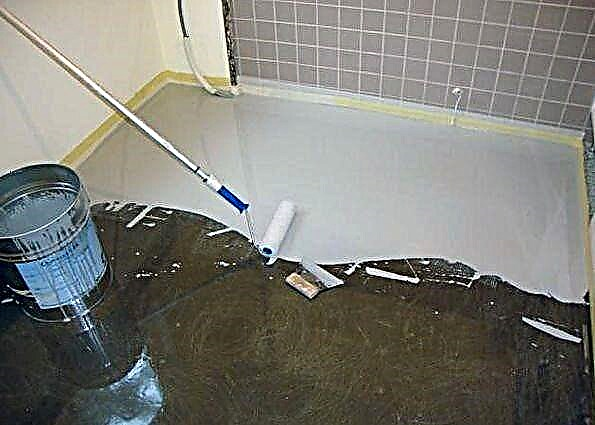 • the composition of the floor does not pose a risk to human health, does not emit any toxic substances when heated,
• the composition of the floor does not pose a risk to human health, does not emit any toxic substances when heated,
• high adhesive qualities,
• a seamless structure that prevents the accumulation of dust and pathogens,
• long operational period (over 20 years),
• beautiful appearance.
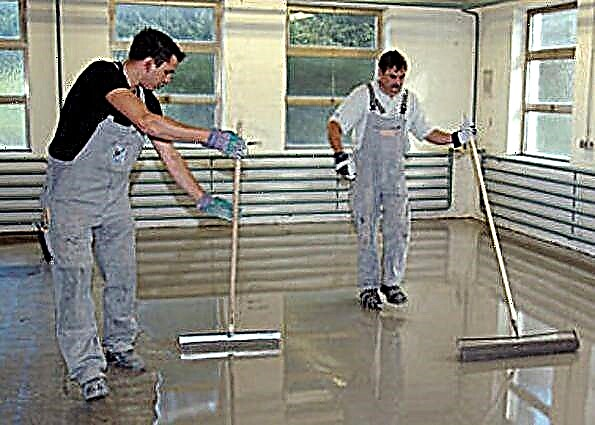
The composition of epoxy floors
The bulk floor is made on the basis of two components: epoxy resin and hardener. As additives, manufacturers can use:
• pigments of inorganic origin, etc.
The finished coating does not absorb chemical elements and odors. And the used dyes do not wash out over time.
 Sometimes, to give the floor an extravagant look, diamond or other mineral chips are added to the composition. But to perform such a pouring technique on their own is not recommended without professionals and special equipment, since the frozen surface is processed by the grinder several times to give smoothness and uniformity to the floor surface. To do this with a simple layman will not work.
Sometimes, to give the floor an extravagant look, diamond or other mineral chips are added to the composition. But to perform such a pouring technique on their own is not recommended without professionals and special equipment, since the frozen surface is processed by the grinder several times to give smoothness and uniformity to the floor surface. To do this with a simple layman will not work.
On the shelves you can also find an epoxy-polyurethane mixture, which is more durable and durable. It is used even for garages, industrial premises. This composition eliminates the lack of epoxy floors - fragility.

Epoxy Flooring Steps
Choosing this method of arranging the finishing floor, it is worth examining the old foundation for integrity. If there are minor flaws, this technology can be applied. Shabby structures are not recommended to be filled with an epoxy mixture, it will not prevent further movement of the base due to loss of resistance and strength.
The entire pouring process is not particularly difficult. It is only important to observe the sequence and maintain the necessary intervals between certain stages.
 1. Remove the old floor (fine finish).
1. Remove the old floor (fine finish).
2. Clean the work surface from debris and dust.
3.Seal all cracks and crevices with polymer putty. To eliminate all irregularities and defects, you can use a self-leveling mixture that will easily fill all the voids.
4. Measure the base for surface differences. Designate the highest and lowest points. If the run-up in terms of large, without a leveling mixture or screed can not do.
 5. After the drying of the working surface, its primer is performed. This is necessary to increase the adhesion of the two coatings. Porous substrates are primed in 2 layers, smooth ones are processed up to 4 times. It is ideal to apply a primer coat with a spray. This will allow the composition to penetrate deeper into the structure faster.
5. After the drying of the working surface, its primer is performed. This is necessary to increase the adhesion of the two coatings. Porous substrates are primed in 2 layers, smooth ones are processed up to 4 times. It is ideal to apply a primer coat with a spray. This will allow the composition to penetrate deeper into the structure faster.
6. Prepare the solution according to the recommendations on the package. Each new batch is poured without delay, otherwise the mixture will seize without being distributed on the surface. Start at the highest point on the floor.
 7. The filled floor must be rolled with a needle roller to release air. In addition, this procedure helps to level the surface, although the solution itself spreads well, evenly distributed over the working area.
7. The filled floor must be rolled with a needle roller to release air. In addition, this procedure helps to level the surface, although the solution itself spreads well, evenly distributed over the working area.
8. The hardening of the epoxy floor is carried out for 7 hours, but it will take several days to complete the polymerization process. Only then can you arrange furniture and decorate the room.
To give the coating additional strength and protection from external factors, it is recommended that after hardening, the floor be coated with epoxy paint.
Epoxy bulk floor: pros, cons, safety, and where you can use
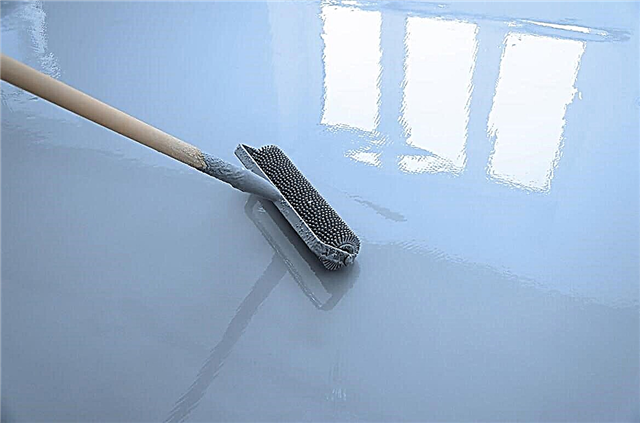
Want your floor to be strong, durable, easy to care for and look great? Then an epoxy floor can be the perfect solution. Perhaps you have never heard of epoxy floors, so in this article we have collected all the information you need to know about them.
What is an epoxy bulk floor?
An epoxy floor is a floor consisting of several layers of epoxy that are applied with a thickness of 1-2 mm.
Epoxy resin is a polymer that consists of two components: resin and hardener. When they are mixed, a chemical reaction occurs, resulting in the formation of a solid, durable material. Epoxy floors are so strong and durable that they are used even in the most difficult industrial conditions.
Examples of epoxy floors (photo and video)



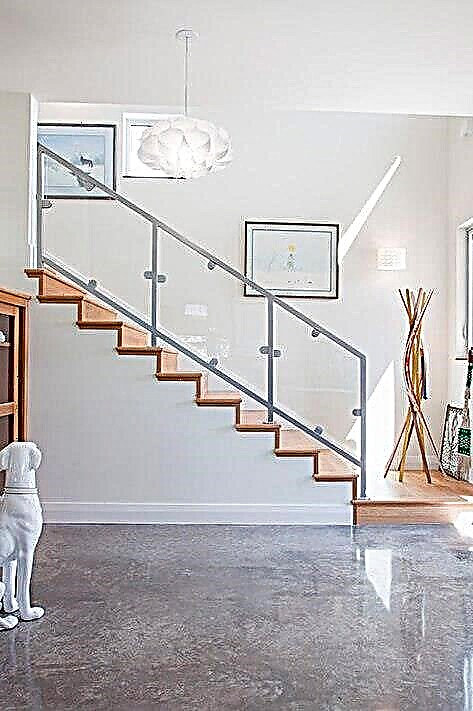


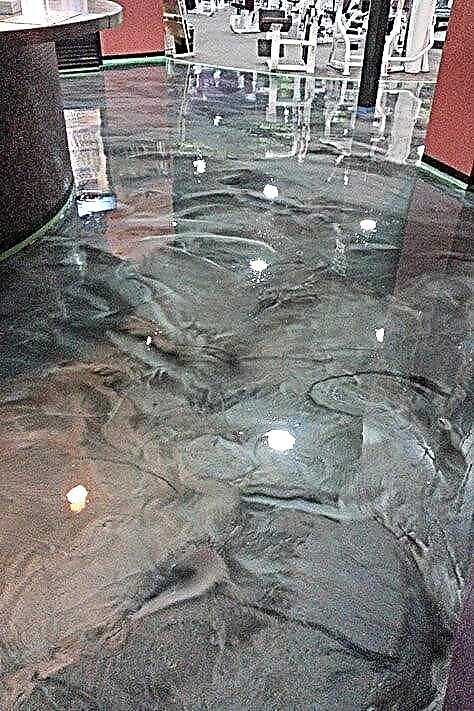

What are the benefits of epoxy flooring?
Epoxy flooring has a number of advantages over other types of flooring:
- Wear resistance and durability. Epoxy floor coverings form a high-strength surface resistant to mechanical and temperature damage, cracks, shocks, vibrations, movements of people and equipment. The service life of epoxy floors is up to 30-40 years.
- Quick and easy installation. Casting of epoxy floors does not require marking, additional adhesives, special tools or equipment.
- Easy to care. It is no more difficult to care than for a wooden floor covered with varnish.
- Resistance to temperature extremes. Epoxy floors can even be poured in baths and saunas.
- Water resistance and surface waterproofing, oil resistance.
- Seamless and easy to clean. As a result of polymerization, the epoxy resin forms a durable seamless coating in which dust, dirt, debris or mold does not accumulate. Thanks to its easy cleaning, epoxy floors are ideal for food and pharmaceutical companies.
- Chemical resistance. Epoxy floors allow the use of aggressive cleaning agents, including alkalis, acids, solvents, disinfectants. That is why epoxy floors are perfectly suitable for enterprises where sanitary and hygienic requirements are extremely high, for example, hospitals, pharmaceutical or food enterprises.
- Dust free.
Security. Cured epoxy resin is non-toxic and completely safe for human health.
Polymer varnishes and decorative impregnations for concrete floors. Varnish for concrete.
Decorative varnish for protective and decorative painting of bulk floors on a polyurethane and epoxy basis. It is also used for finishing concrete and mosaic floors, screeds, paving and facing tiles, natural and artificial stone.
To preserve the unique texture of the concrete floor, while providing it with the necessary reliability, durability and resistance to mechanical damage, you need to use a variety of varnishes for concrete and mosaic floors that can provide the necessary protection.
So, polyurethane varnish is able to provide dust removal of the concrete base and improve the technical characteristics of the floor. All types of varnishes for concrete have a high penetration, to ensure the strength of the base. When applying several layers, polyurethane varnish is able to protect the concrete floor even from the effects of chemically aggressive environments, and is quite suitable as the main coating. Varnishes for concrete are quite successfully used in premises of various purposes, from car repair shops to cafes and street restaurants.
Cement compositions for bulk floors
This option contains three binding components. These include:
Cement is considered one of the foundations of a perfectly even coating. It must be of high quality and free from impurities. Poor quality material leads to cracks on the surface of the coating.
Sand in the composition of the dry bulk floor is used peeled and fine fractions. The smaller the particle diameter, the stronger the plane. As for water, salt should not be present in its composition. They can lead to the appearance of white streaks that cannot be eliminated.
In order to achieve high strength and wear resistance, chemical plasticizers and thickeners are used. These substances give the necessary consistency for a self-leveling bulk floor.
Features: Pros and Cons
Like any floor covering, polymer solution has its advantages and disadvantages.
The advantages of this material include the following characteristics:
- The coating is very flexible, which explains its ability to resist such influences as seismic activity, seasonal deformation of the building and various other fluctuations.
- The floor is quite resistant to water, it does not have an absorbent surface, which prevents the penetration of moisture into the premises, which are one level lower. The surface itself does not lose its qualities when interacting with water.
- The coating device provides for fire safety. Even when exposed to very high temperatures, the floor does not deform and does not increase the radius of fire.
- The technology of applying the solution is very simple, so this type of coating allows you to cope with its filling.
- During operation, the bulk floor does not require a large investment of time and effort on care. It is quite simple in this regard and does not create the need to frequently perform cleaning procedures.
- The latter property is due to the fact that the surface does not accumulate dust, due to the absence of joints and irregularities, dirt does not accumulate on a similar floor as quickly as on other floor coverings.
- An important plus is the long life of the material. In the absence of serious mechanical influences, it can last up to 20 years.
- Liquid linoleum is very pleasant to the touch, because its surface is smooth. However, even with such evenness, the coating does not slip.
- The bulk floor will not be affected by contact with various chemicals. Even caustic compounds will not damage the surface with their effects.
- Such a floor is classified as environmentally friendly. It does not include harmful chemical compounds. Due to this, for the entire time of operation, it does not exude any vapors and does not cause allergic reactions.
- The coating is characterized by the versatility of the combination. It is combined with substrates from virtually any material with proper pre-treatment.
- Bulk linoleum can be embodied in a variety of design options. It will look great with any interior styles. Using this technology, you can create not only beautiful, but also the exclusive decoration of the room.
Despite the large number of positive qualities, there are a number of negative nuances regarding this coverage. Compared to traditional linoleum and other flooring, polymer blends have a very high price. It is more expedient to choose expensive products, because in the price range there is a clear correlation of price and quality. Therefore, covering large areas can greatly affect the state of the wallet.
Mandatory procedure when filling the floor is the alignment of the base. This requires additional time, effort and money. During the pouring process, a number of conditions must be strictly observed - to ensure an absolutely dry base, because if you put liquid linoleum on a wet base, the result may not live up to expectations.
This type of coating cannot be dismantled. If you decide to change the floor, you will not be able to completely get rid of liquid linoleum, and the only way out is to apply a new material on top of the previous one. The process from the initial stage of applying the composition to the readiness for operation takes a fairly long time. It sometimes takes more than a week to finish the floor in the room.
The disadvantages of this type of coating are not so critical and can easily be compensated for by numerous advantages. The elimination of all problems comes down only to the competent calculation of repair time and financial costs.
Short description, features and benefits
Epoxy floors are a type of polymer coatings based on resin, a special hardener and stabilizers. They are used to create substrates with high strength, wear-resistant and decorative characteristics.
The epoxy floor is applied “in bulk” - this allows the mixture to spread freely on the plane, creating an absolutely even and seamless surface. To improve the decorative properties, the floor device provides for the mixing and joining of various color schemes, applying color swatches and strokes, adding various shines, etc.
In addition to mixing colors, various decorative elements can be used - chips, flocks and glitters. These elements are matte, semi-matt or shiny particles that are applied to the finish layer and sealed with a transparent composition.

A distinctive feature of such a coating, in addition to durability, is its high decorativeness and a wide selection of colors
The scope of such floors is extensive and not limited to specific tasks. This includes the energy and food industries, chemical industry, parking complexes and car services, medical and household facilities, trade and exhibition complexes.
For the installation in apartments and country houses, the technology of bulk epoxy floors offers the use of mixtures of a similar composition, as well as for arrangement in places with a more aggressive attitude to the floor surface.
A standard liquid solution of this gender is a two-component composition containing an epoxy-colored base and hardener. The solution is supplied and distributed in different containers. Preparation of the mixture is carried out only before pouring on a leveled and prepared base.
What are the disadvantages of an epoxy floor?
The disadvantages of the epoxy floor include:
- ultraviolet yellowing
- difficulty in dismantling (it is easier to put a new coating on top)
- Strong heat may release toxic substances.
- relatively high price
Epoxy flooring is more expensive than other materials. However, in the long run, such floors will not need to be replaced as often as other types of coatings. They are easier to keep clean and disinfect due to lack of seams and increased resistance to strong cleaning agents. They are easier to install and are replaced less frequently than other types of coatings, therefore they produce less waste and require less waste disposal.
In general, epoxy flooring offers significant cost savings even with higher upfront investments. In Europe, epoxy flooring allows industrial companies to save about 125 million euros per year on repairs and maintenance.
Where can I use epoxy flooring?
You can use epoxy flooring in any room of the house. At first glance it may seem that it is suitable only for modern styles, but the variety of possible colors and textures will help to adapt it to almost any interior.
Epoxy bulk floors were originally used in industrial premises because they are wear-resistant, hygienic and economical to operate. Today you can make such floors in any room at your discretion.
Distinctive advantages and disadvantages
It is believed that epoxy floors emit harmful substances during use and are hazardous to health. This is fundamentally not true, since among the variety of resins, epoxies are most harmless and safe.
The liquid epoxy composition does include mucous membranes that cause mild suffocation and burns, but their percentage is so small that they completely evaporate during base polymerization. Some types of compositions for bulk floors do not contain volatiles and substances at all.
That is why, any qualified specialist will strongly recommend the purchase of personal protective equipment - gloves, glasses and special clothes. Manufacturers themselves do not hide this - safety precautions can be found on the packaging of goods.
In view of this, after the liquid mixture has completely dried, an environmentally friendly and absolutely safe coating is obtained that is completely suitable for laying in children's, kitchens and bathrooms.
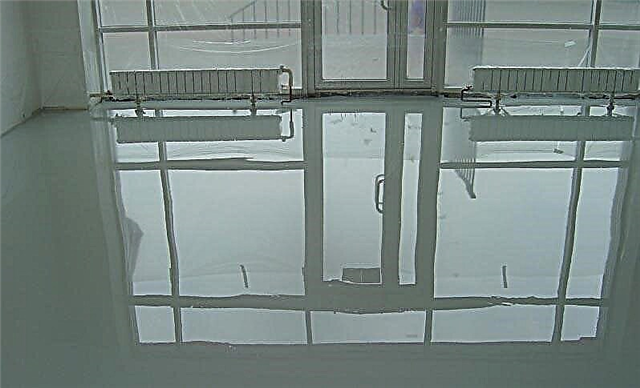
Transparent look is more traditional and involves the use of various decorative additives
In addition to safety, bulk epoxy floors have the following advantages:
- resistance to loads - the finished coating has high strength, resistance to mechanical and physical influences, inert to chemical reagents and compositions,
- sealing the base - the liquid composition allows you to complete the filling of all pores and irregularities, to provide a monolithic, seamless and tight base,
- ease of maintenance - the absence of seams and joints greatly simplifies the process of cleaning, applying and removing detergents,
- fire safety - the coating does not contribute to the spread of open fire, does not emit particularly harmful and fatal substances during combustion,
- hygiene - the polymer floor is not the cause of formation and does not contribute to the spread of bacteria, fungus and harmful microorganisms.
Among other things, such floors have a service life of more than 15 years, do not require annual updates and major repairs. Depending on the type of base and the expected loads, it is possible to use thin-layer compositions, which are distinguished by a simpler application technology and a lower price.
Among the negative points from the use of epoxy coatings, we can distinguish their weak point strength. That is, with a strong impact or falling of a very heavy object, a crack or chip may form. To exclude such damage, it is recommended to use the formulations for their intended purpose and scope.

The addition of various sparkles and chips makes the surface more diverse.
That is, for example, an epoxy two-component bulk floor and quartz fillers are used to equip floors with special strength requirements, a classic mixture without additives of sand for residential premises and premises with low traffic intensity.
During long-term operation, even despite the wear resistance, minor defects and scratches will necessarily appear, which will require the application of a new layer of polymer varnish and a complete renewal of the coating. Partial removal, replacement or overlapping of the old foundation is technically impossible and technology is not expected.
Manufacturers, flow and selection tips
The choice of a specific brand and composition for the installation of epoxy bulk floors depends on the type of base, its technical condition, requirements and expectations of the final floor covering.
There are many manufacturers of bulk floors, but one can separately distinguish domestic companies offering good compositions and related components at fairly affordable prices. This is the TeoChem company - the ElakorED trademark, the KrasKo company - the Epolast and TNP Group trademarks with compounds under the Tapping brand.
The products of these companies meet all international safety and quality standards, have a wide range of products for any load and strength. In addition, manufacturers periodically conduct seminars and master classes, which talk in detail about the technology of work.

Two-component water-based Epolast Aqua polymer floor
The technology of epoxy floors involves the use of several compounds designed to prepare a concrete base, putty the surface, create the underlying layer, equip the front and top coat.
For example, KrasKo products include primers, adhesive compounds for old concrete foundations, traditional and two-component water-based bulk mixtures, etc.
The nominal consumption of bulk mixtures depends on the manufacturer and is indicated on the packaging of a particular product. Thus, the consumption rate of an epoxy bulk floor per 1 m2 with a thickness of 1 mm of the ElakorED brand for the underlying layer is 300-400 g, for the finish - 1.7-1.8 kg. The consumption of “Epolast Aqua” for the finish layer of 1.75 kg, “Taping Floor 205 C” - 750-900 g with a similar thickness.

Soles with spikes for moving on liquid floors and a needle roller for distributing the mixture
In addition, we have indicated the average cost of the above products and additional components, which can be found in the table below.
| Material | Cost, rub) |
|---|---|
| Elacor-ED Grunt-2K / 100, 1 kg | 325-330 |
| Elacor-ED Nal. floor, 1 kg | 285-300 |
| Putty-2K, 1 kg | 255-260 |
| Epolast-Grunt, 1 L | 363-370 |
| Kleipol, 1 kg | 295-300 |
| Epolast, 1 kg | 397-410 |
| Epolast Aqua, 1 kg | 323-330 |
| Epolast-leveling, 1 kg | 329-340 |
| Topping Soil, 1 kg | 445-460 |
| Taping Floor 205 C | 677-680 (2 mm.) |
Epoxy Flooring Sequence

When grouting cracks and damage, a special resin-based putty is used.
The device of an epoxy bulk floor can be done by yourself, provided that the person conducting the work is trained or at least familiar with the technology of preparing the base, preparing and pouring the mortar.
The supporting base must meet a number of requirements, without which the arrangement of the bulk floor is not performed. From a technical point of view, the old concrete surface should not have strong differences in height, deep damage, cracks and sinks.
The maximum permissible deviation is indicated on the packaging of the composition, but on average it is not more than 2-3 mm per 2 m of base. Damage is repaired by puttying and filling with special putty provided by the floor manufacturer. Organic solvents are used to remove greasy stains and oils. If it is impossible to perform these works, they prepare the base for pouring a thin-layer screed.
For a new concrete layer, you should wait for its full polymerization and maturation to the brand strength. The residual moisture content of the concrete layer should not be more than 4%. For concrete floors of the first floors, it is imperative to arrange roll-up or coating waterproofing.

Spreading mixture and spatula for arranging the bedding
When applying and distributing the composition, it is recommended that only prepared tools soaked in xylene be used. This will help remove residual factory grease and disinfect the old tool from the remnants of the old finish. For application, construction rollers with a medium pile (12-14 mm), metal spatulas with a smooth edge (500-600 mm) and a doctor blade are used.
The air is removed from the mixture by a needle roller. All movements in the liquid composition are performed in needle soles. For the preparation of the bulk floor, a construction mixer with a power of at least 1.2-1.5 kW is used. The rotation frequency is selected based on the temperature of the mixture, capacity and power of the tool, but usually it is not more than 500-600 rpm.
For safety reasons, workers should have respirators, goggles and gloves. It is advisable to use replaceable clean shoes and workwear. Preparation of the solution is carried out in a strictly designated place and is carried out immediately before pouring to the surface.

The main stages of preparation and pouring of epoxy mixture
Do it yourself epoxy self-leveling floors using the following technology:
- A thorough cleaning and dust removal of the surface of the base is carried out using a construction vacuum cleaner.
- The expansion joint is glued around the perimeter of the room. For this, a damper tape of the required thickness is used. The tape is fixed using a stapler or adhesive mixture.
- One or two component primer is being prepared. In the first case, the solution is mixed with a mixer, in the second - the components are mixed in a larger container. The primer is mixed according to the instructions and applied to the concrete surface.
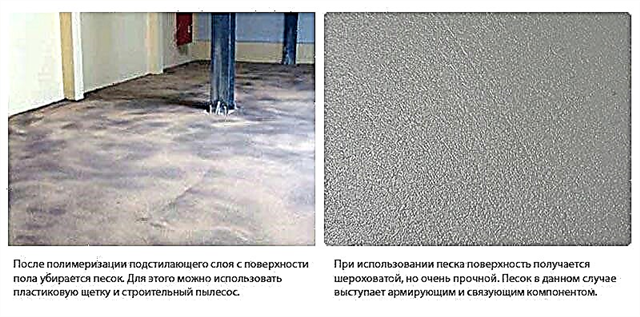
The use of refined quartz sand allows to strengthen the first bulk layer

Mixing of the final coating occurs immediately before pouring
This technology works for bulk floor “Elacor-ED” with quartz aggregate. The drying time of the primer, the preparation of the mixture, the release of air from the solution and polymerization are indicated in the attached instructions.
With the installation of other bulk epoxy floors with your own hands, the technology may be slightly different. Some species generally do not involve the use of putties and quartz fillers.

